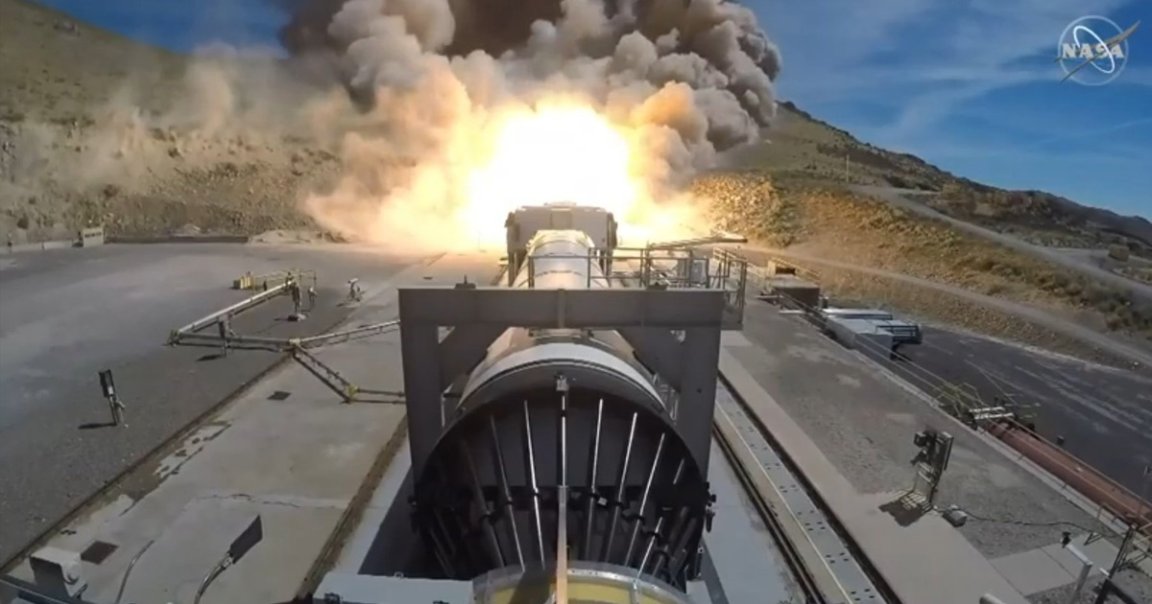
Massive Fireball
Northrop Grumman just ignited a booster for NASA’s long-awaited Space Launch System (SLS) — blasting so forcefully that it ignited brush on the surrounding hills at the company’s test facility in Promontory, Utah.
Space Launch System
The Flight Support Booster, or FSB-1, is meant to lay the groundwork for improving future rocket boosters that are meant to power NASA’s SLS, as Spaceflight Now reports.
The SLS is a heavy-lift launch system meant to one day carry astronauts to the Moon as part of the agency’s upcoming Artemis missions. A July test of the core stage rocket built by Boeing was a success.
According to Northrop Grumman, the 154-foot booster is the “largest solid rocket motor ever built for flight.” The booster is made out of five segments and weighs a whopping 1.6 million pounds, producing a maximum of 3.6 million pounds of thrust, according to official documentation.
The SLS core stage is even bigger, towering at 212 feet and designed to push out two million pounds of thrust from four RS-25 engines.
Big Rockets Are Hard
“From our view, it looks like everything went great,” NASA’s TV commentator said during the live stream of the event.
“Rockets, especially big ones, are rather hard,” Ars Technica senior space reporter Eric Berger wrote in a tweet, congratulating Northrop Grumman. “Good work by NASA and Northrop Grumman to pull off this test.”
READ MORE: SLS booster test-fired in Utah [Spaceflight Now]
More on SLS: Boeing Just Powered Up NASA’s Most Powerful Rocket Ever